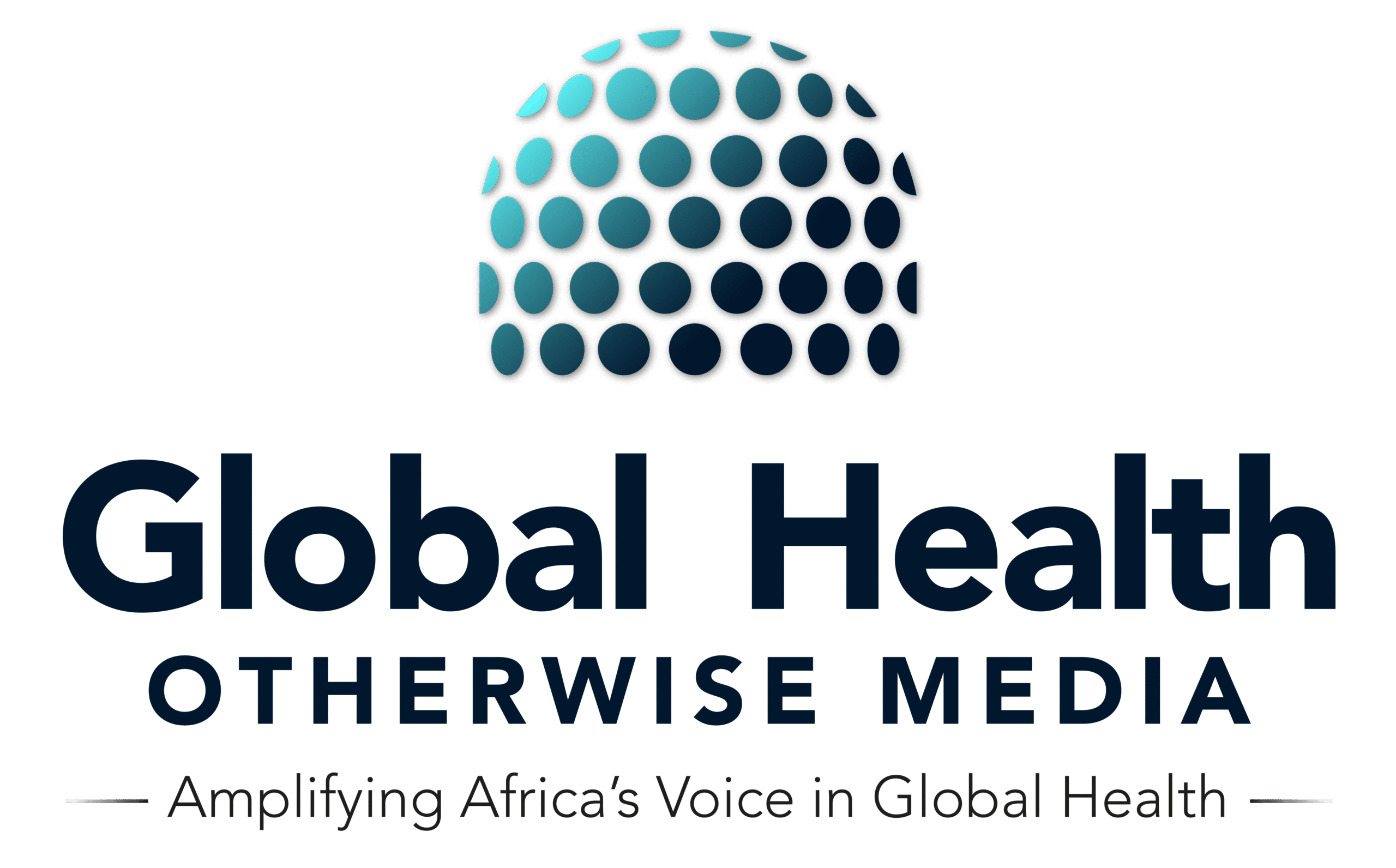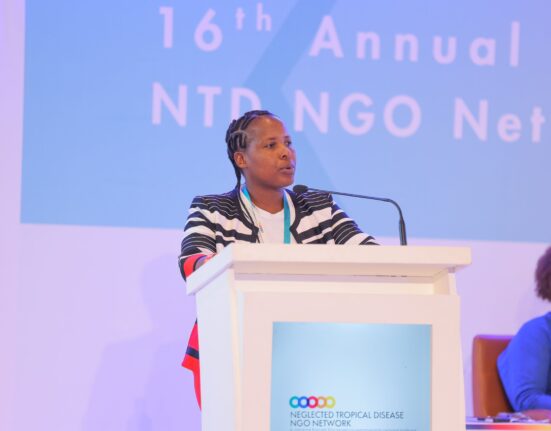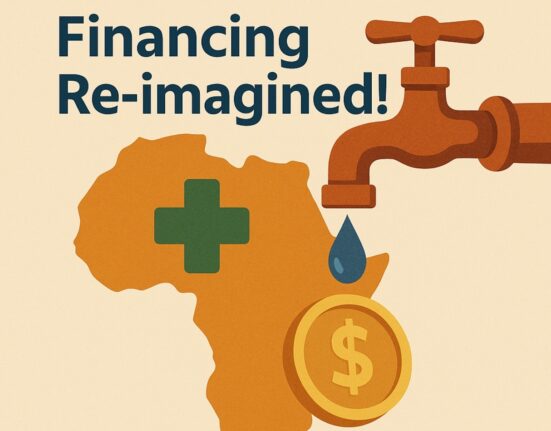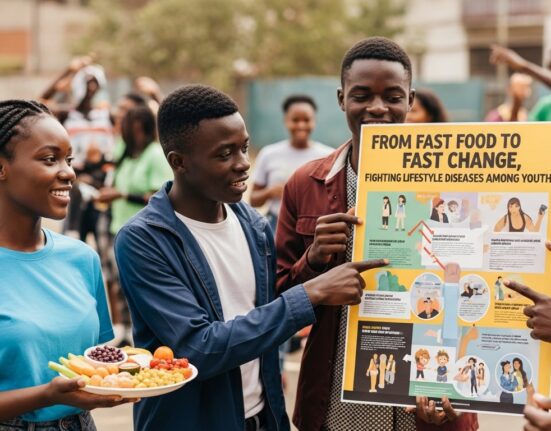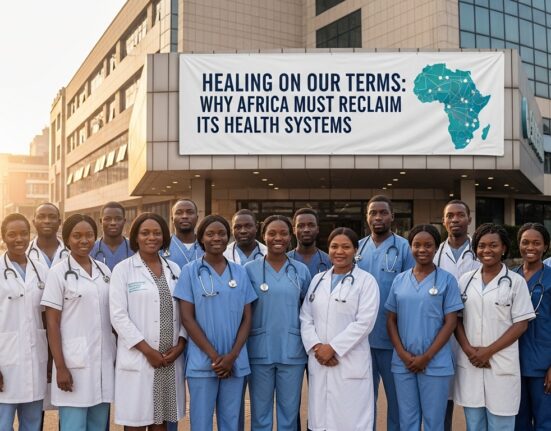National short-term consultant to develop a communication strategy for the Pamoja Tuhifadhi Bahari Yetu project
IUCN Tanzania – Bahari Yetu Project
RfP Reference: Rfp/IUCN/002/09
Welcome to this Procurement by IUCN. You are hereby invited to submit a Proposal. Please read the information and instructions carefully because non-compliance with the instructions may result in disqualification of your Proposal from this Procurement.
-
REQUIREMENTS
-
A detailed description of the services and/or goods to be provided can be found in Attachment 1
-
-
CONTACT DETAILS
-
During this procurement, i.e., from the publication of this RfP to the award of a contract, you may not discuss this procurement with any IUCN employee or representative other than the following contact. You must address all correspondence and questions to the contact, including your proposal.
-
IUCN Contact: tenders.tz@iucn.org
-
PROCUREMENT TIMETABLE
-
This timetable is indicative and may be changed by IUCN at any time. If IUCN decides that changes to any of the deadlines are necessary, we will publish this on our website and contact you directly if you have indicated your interest in this procurement (see Section 3.2).
-
DATE
ACTIVITY
10th July
Publication of the Request for Proposals
18th July 2025
Deadline for submission of proposals to IUCN (“Submission Deadline”)
25th July 2025
Planned date for contract award
1st August 2025
Expected contract start date
-
Please email the IUCN contact to express your interest in submitting a proposal by the deadline stated above. This will help IUCN to keep you updated regarding the procurement.
-
COMPLETING AND SUBMITTING A PROPOSAL
-
Your Proposal must consist of the following four separate documents:
-
-
Signed Declaration of Undertaking (see Attachment 2)
-
Pre-Qualification Information (see Section 4.3 below)
-
Technical Proposal (see Section 4.4 below)
-
Financial Proposal (see Section 4.5 below)
Proposals must be prepared in English.
-
Your Proposal must be submitted by email to the IUCN Contact (see Section 2). The subject heading of the email shall be [RfP Reference – bidder name]. The bidder’s name is the name of the company/organisation on whose behalf you are submitting the proposal, or your own surname if you are bidding as a self-employed consultant. Your proposal must be submitted in PDF format. You may submit multiple emails suitably annotated, e.g., Email 1 of 3, if attached files are too large to suit a single email transmission. You may not submit your Proposal by uploading it to a file-sharing tool.
IMPORTANT: Submitted documents must be password-protected so that they cannot be opened and read before the submission deadline. Please use the same password for all submitted documents. After the deadline has passed and within 12 hours, please send the password to the IUCN Contact. This will ensure a secure bid submission and opening process. Please DO NOT email the password before the deadline for Proposal submission.
-
Pre-Qualification Criteria
IUCN will use the following Pre-Qualification Criteria to determine whether you have the capacity to provide the required goods and/or services to IUCN. Please provide the necessary information in a single, separate document.
-
Pre-Qualification Criteria
1
3 reference letters from NGOs addressed to IUCN
2
Confirm and submit all the necessary legal registrations to perform the work including:
-
Certificate of incorporation
-
Tax clearance certificate
-
TIN Certificate
-
Technical Proposal
The technical proposal must address each of the criteria stated below explicitly and separately, quoting the relevant criteria reference number (left-hand column).
Proposals in any other format will significantly increase the time it takes to evaluate, and such Proposals may therefore be rejected at IUCN’s discretion.
Where CVs are requested, these must be of the individuals who will carry out the work specified. The individuals you put forward may only be substituted with IUCN’s approval.
IUCN will evaluate technical proposals with regards to each of the following criteria and their relative importance:
Description
Information to provide
Relative weight
1
Quality of technical approach
1. Description of the conceptual and methodological approach.
Combine 1 & 2: Explain how you will implement and meet the deliverables and objectives specified in the ToR.
2. Work plan: Comprehensive work plan and timeline outlining key activities, milestones, and deliverables, aligned with the project’s timeframe and objectives.
30
2
The conceptual and methodological approach
Methodology: Clear, concise, and feasible methodological approach detailing how the communication strategy will be developed, including a knowledge audit, participatory communication needs assessment, stakeholder engagement plan, validation steps, and an adaptive management approach for evaluation.
30
4
Relevant competencies and experience
Experts/Subject matter experts
- Minimum of 8 years of practical experience in developing and implementing communication strategies in the conservation or marine sectors; proven track record in stakeholder engagement, participatory research, facilitation of learning events, and delivery of high-quality, clear, and strategic documents. Submission of relevant samples of prior work demonstrating these competencies is required.
- Advanced degree (Master’s or PhD) in Communication, Knowledge Management, Environmental Studies, Development, or related fields, with demonstrated expertise in designing communication strategies and knowledge management within marine or conservation sectors.
- Understanding of the local context: Demonstrated in-depth knowledge of Tanzania’s coastal and marine conservation context, local communication structures, relevant policies, languages, and sociocultural dynamics critical for effective strategy development and implementation
40
TOTAL
100%
-
Financial Proposal
-
The financial proposal must be a fixed and firm price for the provision of the goods/services stated in the RfP in their entirety.
-
Prices include all costs.
-
Applicable Goods and Services Taxes
-
Currency of proposed rates and prices
Submitted rates and prices are deemed to include all costs, insurances, taxes, fees, expenses, liabilities, obligations, risk, and other things necessary for the performance of the Terms of Reference or Specification of Requirements. IUCN will not accept charges beyond those clearly stated in the Financial Proposal.
IUCN withhold 5% of the professional fee charged as withholding tax payment.
Proposal rates and prices shall be inclusive of Value Added Tax.
All rates and prices submitted by Proposers shall be in USD.
-
-
-
Additional information not requested by IUCN should not be included in your Proposal and will not be considered in the evaluation.
-
Your proposal must remain valid and capable of acceptance by IUCN for 90 calendar days following the submission deadline.
-
Withdrawals and Changes
You may freely withdraw or change your proposal at any time before the submission deadline by written notice to the IUCN Contact. However, to reduce the risk of fraud, no changes or withdrawals will be accepted after the submission deadline.
-
-
EVALUATION of PROPOSALS
-
Completeness
-
Pre-Qualification Criteria
-
Technical Evaluation
-
Scoring Method
-
IUCN will first check your proposal for completeness. Incomplete proposals will not be considered further.
Only proposals that meet all the pre-qualification criteria will be evaluated.
-
Your proposal will be assigned a score from 0 to 10 for each of the technical evaluation criteria, such that ‘0’ is low and ‘10’ is high.
-
Minimum Quality Thresholds
Proposals that receive a score of ‘0’ for any of the criteria will not be considered further.
-
Technical Score
Your score for each technical evaluation criterion will be multiplied with the respective relative weight (see Section 4.4) and these weighted scores added together to give your proposal’s overall technical score.
-
Financial Evaluation and Financial Scores
The financial evaluation will be based upon the full total price you submit. Your financial proposal will receive a score calculated by dividing the lowest financial proposal that has passed the minimum quality thresholds (see Section 5.3.2) by the total price of your financial proposal.
Thus, for example, if your financial proposal is for a total of CHF 100 and the lowest financial proposal is CHF 80, you will receive a financial score of 80/100 = 80%
-
Total Score
Your proposal’s total score will be calculated as the weighted sum of your technical score and your financial score.
The relative weights will be:
Technical: 70%
Financial: 30%
Thus, for example, if your technical score is 83% and your financial score is 77%, you will receive a total score of 83 * 70% + 77 * 30% = 58.1% + 23.1% = 81.2%.
Subject to the requirements in Sections 4 and 7, IUCN will award the contract to the bidder whose proposal achieves the highest total score.
-
-
Explanation of procurement procedure
-
IUCN is using the Open Procedure for this procurement. This means that the contracting opportunity is published on IUCN’s website and open to all interested parties to take part, subject to the conditions in Section 7 below.
-
You are welcome to ask questions or seek clarification regarding this procurement. Please email the IUCN Contact (see Section 2), taking note of the deadline for submission of questions in Section 3.1.
-
All proposals must be received by the submission deadline in Section 3.2 above. Late proposals will not be considered. All proposals received by the submission deadline will be evaluated by a team of three or more evaluators in accordance with the evaluation criteria stated in this RfP. No other criteria will be used to evaluate proposals. The contract will be awarded to the bidder whose proposal received the highest Total Score. IUCN does, however, reserve the right to cancel the procurement and not award a contract at all.
-
IUCN will contact the bidder with the highest-scoring proposal to finalise the contract. We will contact unsuccessful bidders after the contract has been awarded and provide detailed feedback. The timetable in Section 3.1 gives an estimate of when we expect to have completed the contract award, but this date may change depending on how long the evaluation of proposals takes.
-
-
Conditions for participation in this procurement
-
To participate in this procurement, you are required to submit a proposal, which fully complies with the instructions in this RfP and the Attachments.
-
It is your responsibility to ensure that you have submitted a complete and fully compliant proposal.
-
Any incomplete or incorrectly completed proposal submission may be deemed non-compliant, and as a result you may be unable to proceed further in the procurement process.
-
IUCN will query any obvious clerical errors in your proposal and may, at IUCN’s sole discretion, allow you to correct these, but only if doing so could not be perceived as giving you an unfair advantage.
-
-
In order to participate in this procurement, you must meet the following conditions:
-
- Free of conflicts of interest
- Registered on the relevant professional or trade register of the country in which you are established (or resident, if self-employed)
- In full compliance with your obligations relating to payment of social security contributions and of all applicable taxes
- Not been convicted of failing to comply with environmental regulatory requirements or other legal requirements relating to sustainability and environmental protection.
- Not bankrupt or being wound up
- Never been guilty of an offence concerning your professional conduct.
- Not involved in fraud, corruption, a criminal organisation, money laundering, terrorism, or any other illegal activity.
-
You must complete and sign the Declaration of Undertaking (see Attachment 2).
-
If you are participating in this procurement as a member of a joint venture, or are using sub-contractors, submit a separate Declaration of Undertaking for each member of the joint venture and sub-contractor, and be clear in your proposal which parts of the goods/services are provided by each partner or sub-contractor.
-
Each bidder shall submit only one proposal, either individually or as a partner in a joint venture. In case of joint venture, one company shall not be allowed to participate in two different joint ventures in the same procurement nor shall a company be allowed to submit a proposal both on its behalf and as part of a joint venture for the same procurement. A bidder who submits or participates in more than one proposal (other than as a subcontractor or in cases of alternatives that have been permitted or requested) shall cause all the proposals with the bidder’s participation to be disqualified.
-
By taking part in this procurement, you accept the conditions set out in this RfP, including the following:
-
- It is unacceptable to give or offer any gift or consideration to an employee or other representative of IUCN as a reward or inducement in relation to the awarding of a contract. Such action will give IUCN the right to exclude you from this and any future procurements, and to terminate any contract that may have been signed with you.
- Any attempt to obtain information from an employee or other representative of IUCN concerning another bidder will result in disqualification.
- Any price fixing or collusion with other bidders in relation to this procurement shall give IUCN the right to exclude you and any other involved bidder(s) from this and any future procurements and may constitute a criminal offence.
-
Confidentiality and data protection
-
IUCN follows the European Union’s General Data Protection Regulation (GDPR). The information you submit to IUCN as part of this procurement will be treated as confidential and shared only as required to evaluate your proposal in line with the procedure explained in this RfP, and for the maintenance of a clear audit trail. For audit purposes, IUCN is required to retain your proposal in its entirety for 10 years after then end of the resulting contract and make this available to internal and external auditors and donors as and when requested.
-
In the Declaration of Undertaking (Attachment 2) you need to give IUCN express permission to use the information you submit in this way, including personal data that forms part of your proposal. Where you include personal data of your employees (e.g. CVs) in your proposal, you need to have written permission from those individuals to share this information with IUCN, and for IUCN to use this information as indicated in 8.1. Without these permissions, IUCN will not be able to consider your proposal.
-
-
Complaints procedure
If you have a complaint or concern regarding the propriety of how a competitive process is or has been executed, then please contact tenders.tz@iucn.org. Such complaints or concerns will be treated as confidential and are not considered in breach of the above restrictions on communication (Section 2.1).
-
Contract
The contract will be based on IUCN’s template in Attachment 3, the terms of which are not negotiable. They may, however, be amended by IUCN to reflect requirements from the donor funding this procurement.
-
About IUCN
IUCN is a membership Union uniquely composed of both government and civil society organisations. It provides public, private, and non-governmental organisations with the knowledge and tools that enable human progress, economic development and nature conservation to take place together.
Headquartered in Switzerland, IUCN Secretariat comprises around 1,000 staff with offices in more than 50 countries.
Created in 1948, IUCN is now the world’s largest and most diverse environmental network, harnessing the knowledge, resources and reach of more than 1,300 Member organisations and some 10,000 experts. It is a leading provider of conservation data, assessments and analysis. Its broad membership enables IUCN to fill the role of incubator and trusted repository of best practices, tools and international standards.
IUCN provides a neutral space in which diverse stakeholders including governments, NGOs, scientists, businesses, local communities, indigenous people’s organisations and others can work together to forge and implement solutions to environmental challenges and achieve sustainable development.
Working with many partners and supporters, IUCN implements a large and diverse portfolio of conservation projects worldwide. Combining the latest science with the traditional knowledge of local communities, these projects work to reverse habitat loss, restore ecosystems and improve people’s well-being.
Objective of the Consultancy
This consultancy has the following objective(s):
- The primary objective of this consultancy is to design and develop a comprehensive Communication Strategy for the Pamoja Tuhifadhi Bahari Yetu project. This strategy is essential for enhancing the visibility of the project, fostering meaningful engagement with stakeholders, and promoting the generation, exchange, and long-term impact of knowledge.
- The Communication Strategy will outline a clear, consistent, and targeted messaging framework aimed at effectively reaching key audiences. These include coastal communities, government institutions, development partners, civil society, and media. The strategy will focus on driving behaviour change, garnering public support for marine conservation, and aligning the project’s objectives with Tanzania’s broader Blue Economy agenda. Through this approach, the Communication Strategy will help amplify the project’s message and increase its reach and influence.
Background
Project Reference: IUCN Project Number from Project Portal
Donor reference: Donor project reference (not donor reporting code!), where applicable
About IUCN
IUCN is a membership Union uniquely composed of both government and civil society organisations. It provides public, private and non-governmental organisations with the knowledge and tools that enable human progress, economic development and nature conservation to take place together.
Created in 1948, IUCN is now the world’s largest and most diverse environmental network, harnessing the knowledge, resources and reach of more than 1,400 Member organisations and around 15,000 experts. It is a leading provider of conservation data, assessments and analysis. Its broad membership enables IUCN to fill the role of incubator and trusted repository of best practices, tools and international standards.
IUCN provides a neutral space in which diverse stakeholders including governments, NGOs, scientists, businesses, local communities, indigenous peoples organisations and others can work together to forge and implement solutions to environmental challenges and achieve sustainable development.
Working with many partners and supporters, IUCN implements a large and diverse portfolio of conservation projects worldwide. Combining the latest science with the traditional knowledge of local communities, these projects work to reverse habitat loss, restore ecosystems and improve people’s well-being.
About the Project
The International Union for Conservation of Nature (IUCN) Tanzania Country Office is leading the implementation of the Pamoja Tuhifadhi Bahari Yetu Project, which is generously funded by the Delegation of the European Union to Tanzania. This project is part of the four-year, EU-funded initiative under the “Blue Economy for Job Creation and Climate Change Adaptation” programme, running from 2024 to 2028. Its overarching goal is to enhance the protection of marine and coastal ecosystems, promote the development of a climate-resilient blue economy, and foster the creation of sustainable employment opportunities.
Aligned with Tanzania’s national Blue Economy Framework and the Zanzibar Blue Economy Policy, the project operates across both mainland Tanzania and Zanzibar. By addressing critical challenges such as marine resource degradation and climate change impacts, it aims to ensure the sustainable use and management of marine resources, while safeguarding biodiversity for future generations.
The Pamoja Tuhifadhi Bahari Yetu Project is implemented in collaboration with key partners, including WWF Tanzania, The Nature Conservancy (TNC), Wildlife Conservation Society (WCS), and the Forum for Climate Change (FORUMCC).
Description of the Assignment
The consultant or firm will be responsible for designing and developing a comprehensive Communication Strategy for the Pamoja Tuhifadhi Bahari Yetu Project. The consultant will undertake the following tasks:
Development of the Communication Strategy
- Review the Project Document to ensure the Communication Strategy aligns with the project’s goals, objectives, and expected outcomes.
- Conduct a comprehensive assessment to map key stakeholders and identify priority knowledge topics and messages to be communicated by the project.
- Identify Knowledge Holders and Knowledge Seekers among project partners and stakeholders to inform communication flows and learning opportunities.
- Map Existing Information Flows and Communication Structures within the project and between stakeholders, highlighting bottlenecks and opportunities for improvement.
- Identify Modalities for Peer-to-Peer Learning within and outside the project to facilitate horizontal knowledge exchange.
- Assess Existing Platforms and Networks for knowledge sharing on blue economy, marine ecosystems, and natural resource management to identify synergies and integration points.
- Segment Target Audiences and recommend the most effective communication channels (e.g., radio, digital platforms, community meetings, social media, print media) for each group.
- Establish Communication Protocols and Guidelines for internal and external communication, including media engagement and social media strategies.
- Develop Branding and Visibility Guidelines in compliance with donor and implementing partner standards to ensure consistent project identity.
- Design a Monitoring and Evaluation (M&E) Framework for communication activities to measure effectiveness, engagement, knowledge uptake, and behaviour change.
- Develop Behaviour Change Communication (BCC) Strategies to influence practices in climate adaptation, marine conservation, and sustainable livelihoods.
How to apply
Step 1: Acquire Tender Documents
Obtain the relevant tender documents.
Step 2: Review Requirements
Thoroughly read the tender specifications, terms, and conditions.
Step 3: Prepare Proposal
Prepare your proposal as guided, ensuring all the required information is included.
Step 4: Submission
Submit your completed proposal by July 18th, 2025, via the email address
tenders.tz@iucn.org
